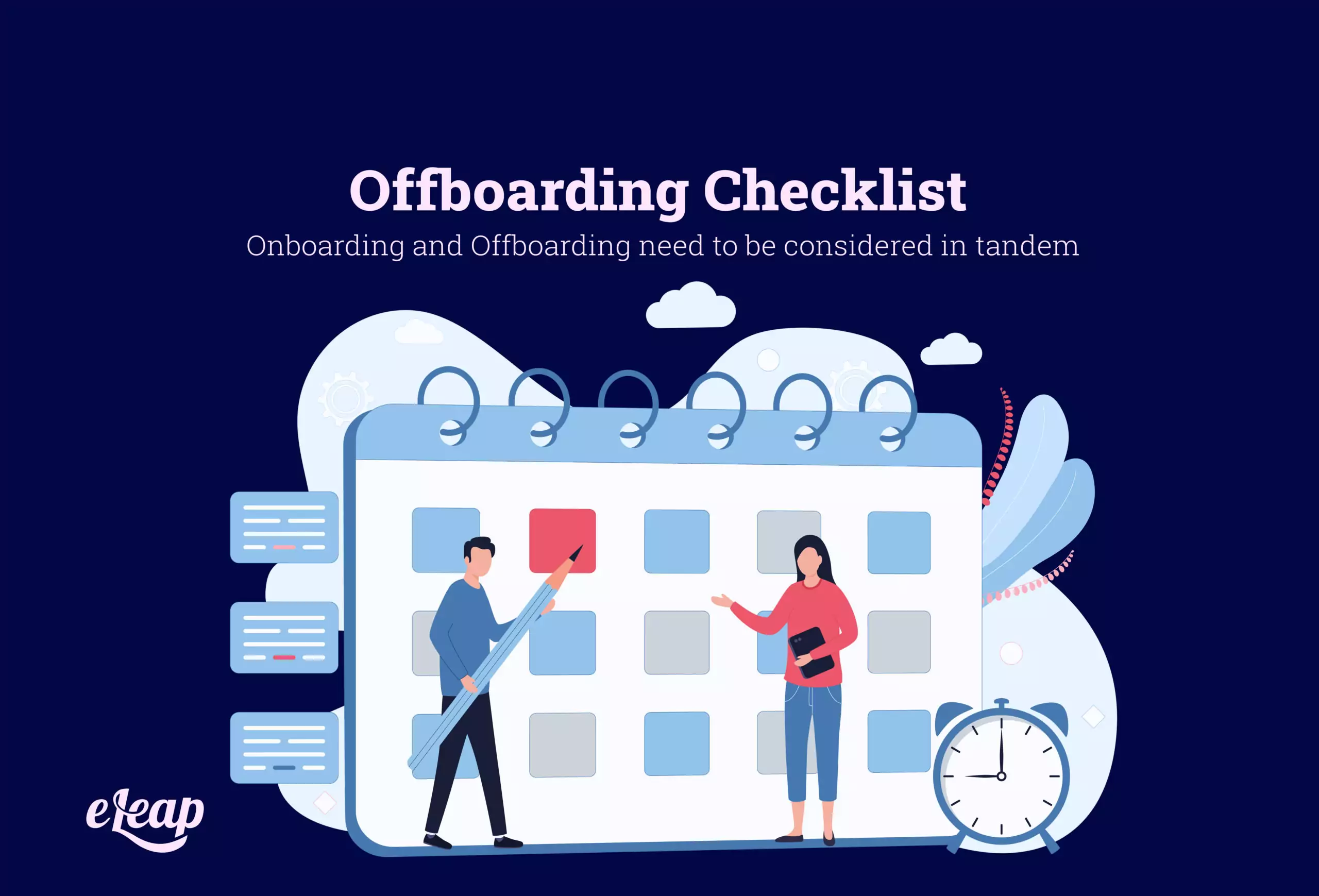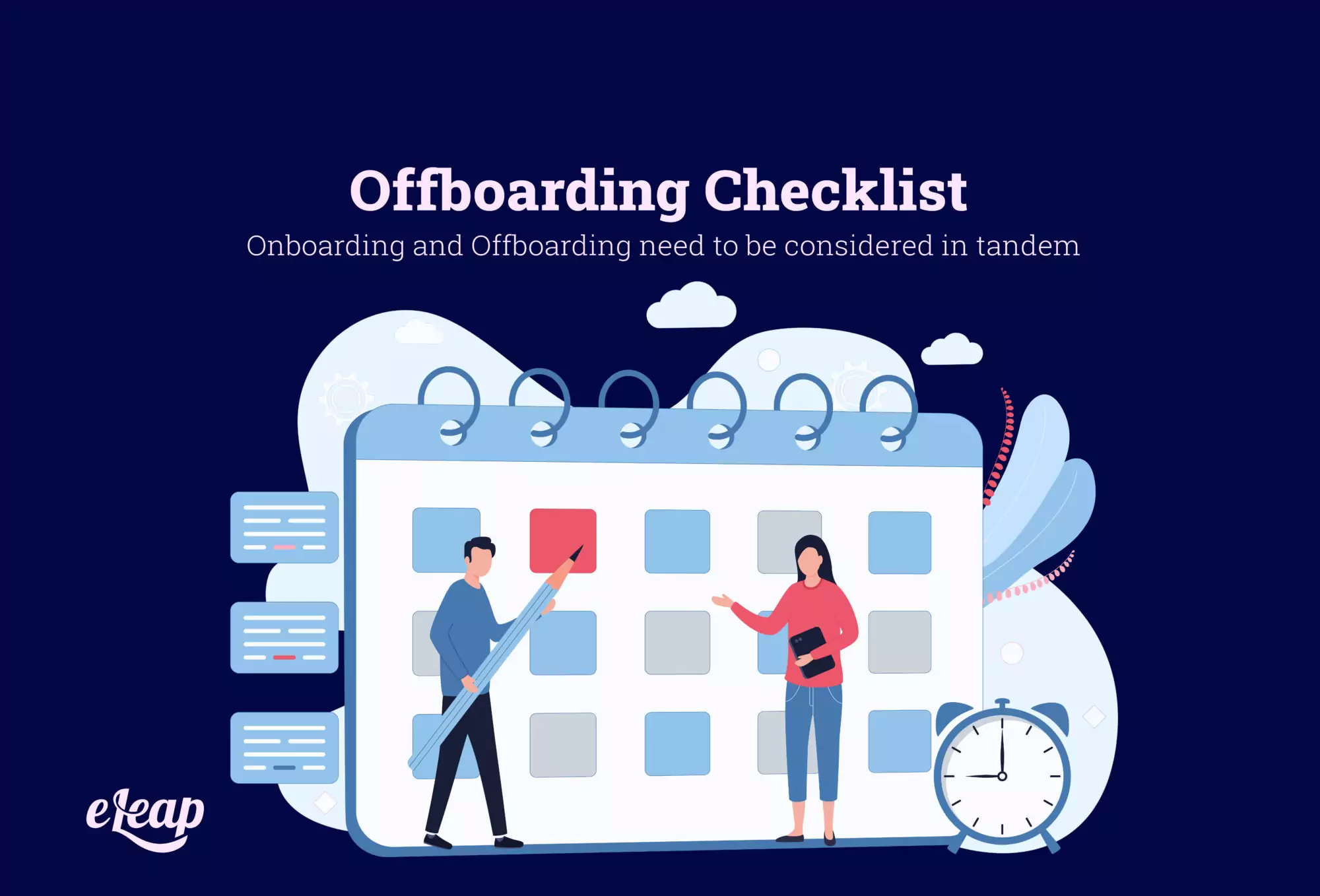Offboarding Checklist
Onboarding and Offboarding planning is required

A lot of businesses put their focus on welcoming new employees into the ranks. In the onboarding process, you make sure that everyone who joins your team understands their new roles and responsibilities. Your human resources department is sure that all new hires get properly integrated into the workplace.

However, as you welcome new employees, you must often let them go. There are many possible reasons why an employee is leaving your business. But making sure that they leave systematically is just as important as making sure that they come into your business systematically.
This article will cover many of the most important things you need to know about offboarding employees. It will be about how you can employ an offboarding checklist into your company to make letting employees go easier for everyone.
Why Should You Have an Offboarding Process?
When you have a formal offboarding process, and an offboarding checklist, you make it easier to safely and quickly help employees exit your business. Not all employees are let go of for negative reasons, sometimes it is about a conflict of schedule or life changes. From termination to retirement, it shouldn’t matter why an employee is leaving. Every kind of exit should be handled with an effective offboarding strategy, which includes the offboarding checklist.
Using an offboarding checklist can help you make a smoother transition for you and the employee. Making sure you know how to handle employee exits can ensure you don’t need to reach out to a former employee after they’ve been let go, and can even prevent you from getting sued.
A former employee can change your business reputation, so your offboarding process must be efficient and effective. A satisfied employee may recommend your business to other people, and they will continue to speak highly about your product or service after they’ve left. On the other hand, a dissatisfied employee may caution others from working at your business and choose to tell others not to do business with you. A good offboarding process can also help you receive valuable, honest feedback from your former employees without anger or frustration muddling their opinions.
An offboarding checklist can help you create more positive offboarding experiences, and prevent things like data breaches from happening. An angry employee may cause physical damages to your business and equipment, and all those conflicts can be costly to fix. Create more positive offboarding experiences and use an offboarding checklist to guarantee that the break between you and your former employee is a clean one.
The Value of the Offboarding Checklist
As discussed, there are a lot of reasons why you may want to have as efficient of an offboarding process as you do onboarding process. An offboarding checklist can help you make the most out of the offboarding process.
An extensive offboarding checklist should help you and your HR department ensure that your employees leave without burning valuable connections. Not to mention, a poor offboarding process may create issues in your workplace even after your former employee has left. Other employees may become more indifferent or start to gain resentment towards their work environment if your offboarding process is not effective. In extreme cases, this may even lead to security issues and people quitting. If this happens you may have a hard time finding new employees going forward, and your company’s reputation may suffer.
Tools like the offboarding checklist can help you ensure that there are fewer issues when offboarding employees.
What Should Your Offboarding Checklist Include?
With the importance of the offboarding process clear now, how can you make a thorough offboarding checklist that will prevent these terrible experiences? These eight powerful tips can help you make a great offboarding checklist for the best offboarding process possible.
Communication. When an employee is being let go, you may feel like you should wait to share all the information your associates need to know about an employee leaving until you’re sure all the details are set in stone. You may want to be sure you know when their last day is, who you’ll be getting to fill in for their work in the meanwhile, and how long it will take to find a replacement. Don’t wait too long, though. Prompt communication with HR, payroll, and IT, will help cut down on rumors and miscommunication.
Preparation. The next part of the offboarding checklist is making sure that you have all the necessary offboarding paperwork on hand for smooth exits. You’ll need a letter of termination or resignation, necessary NDAs, and any ongoing benefit documents like unemployment insurance or retirement plans. Here you can also decide what will be done with the employee’s last paycheck, and any other lingering payroll issues should be resolved.
Transfer Knowledge. When someone works at any job for a while, they gain experience which turns into knowledge and skills. There’s no way to document this hands-on knowledge if your employee leaves without sharing their skills. This knowledge can be helpful when educating new employees on how to handle the same position, especially where it may be difficult for them to pick up where the last person left off.
Ask them some questions that can help you hold on to that vital knowledge. Have them share their daily routine and talk about how they complete repeat projects. Having them share their priority skills can help newly hired employees. As can having them talk about what files the next person may need to successfully complete their job. This part of your offboarding checklist can also help your onboarding process, so be thorough with your questions.
Exit Interviews. Do not undervalue the exit interview when making your offboarding checklist. This time before an employee leaves can offer your business an honest window into the reality of working for your company. Prompting honest feedback from your exiting employee can help you address complaints, and you can assure them that if they choose to come back you’ve been made aware of the problems and will work to fix them.
In many situations, the source of employee conflict may be with their direct manager, so to prompt open discussion with your employee try to use a neutral interviewer. Comfort the employee by assuring them that their answers will remain anonymous and take everything they say seriously.
Recover Assets. One of the major issues with bad offboarding is security. According to OneLogin, 20% of companies say that “failure to deprovision employees from corporate applications contributed to a data breach at their organization.” Make sure that your offboarding checklist includes double-checking to make sure that your former employee no longer has access to your accounts and servers. They also need to have all personal artifacts removed from their office. Check again that they have returned all company equipment before the final workday.
Don’t Close Doors. In a market where it is more difficult to find employees who have the right skills to work in specialized positions, it may be challenging for you to find a replacement for your former employee. This tip for making a better offboarding checklist is here to remind you that it’s best not to totally close the door on a working relationship. Invite them to join an alumni team on a social media platform so that they don’t forget you. At the very least, try to get their up-to-date information so you can contact them in the future.
Tie Loose Ends. Once an employee is gone, there are still things your company should do to ensure a complete offboarding checklist has been successfully implemented. Double-check with IT to be positive that the employee no longer has a user account in your systems. Also, forward all communications that would usually go to that employee to their manager or another person on staff until a replacement can be found. Have HR ensure that employee has gotten all their personal belongings and returned all equipment. Then, make sure that the employee is no longer included on paperwork or in meetings.
Be Fun. Offboarding can be a dower process. You may be letting go of a worker that has been with you for years and is now looking forward to retirement. There’s no need to be happy for that employee while still ensuring that your offboarding process is thorough. Send around a card for the office to sign, schedule a party, or get them a gift that shows you appreciated them. Leaving a positive last impression helps keep that door open while improving your reputation on the job market and in your business.
Using the Offboarding Checklist in Your Company
Having a bad offboarding process can really negatively affect your company. In the short term, things like data breaches can cost you to lose lots of money. In the long term, if you gain a negative reputation with prospective employees you’ll have a difficult time hiring new workers. Having a thorough offboarding checklist can help you make the best offboarding process you can offer, making the exit process better for your business and your former employee.